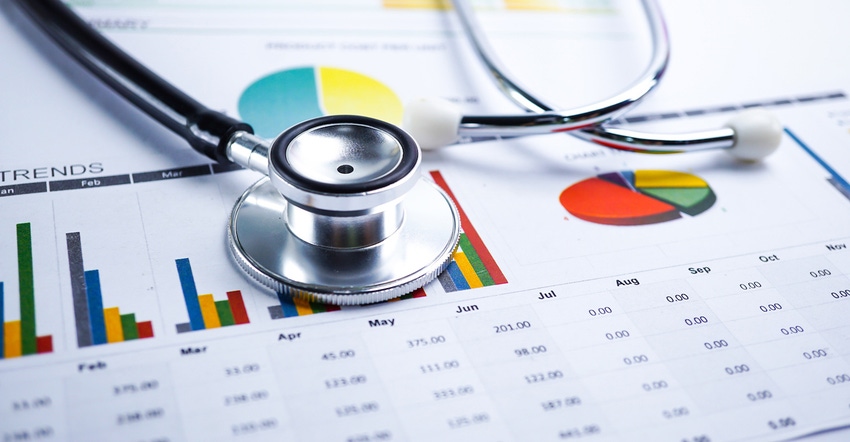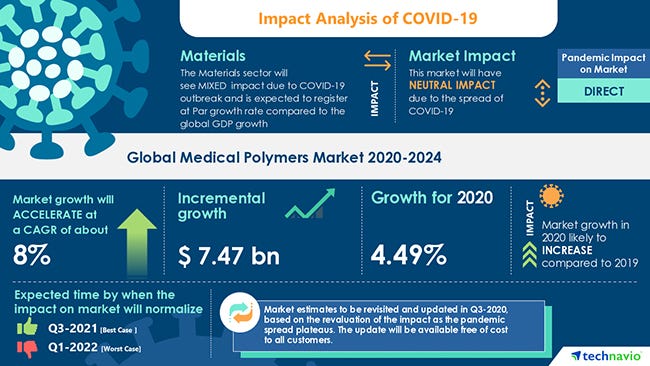Medical Manufacturing Supply Chain Sees Bright Future
The medical technology industry is successfully navigating this recession like it has many others, and the supply chain is happy to go along for the ride.
October 23, 2020

Before joining PlasticsToday, I was editor of several business-to-business publications covering the medical manufacturing supply chain in the United States, Europe, and Asia/Pacific, and one of our team’s mantras was that the medical technology industry was recession-proof. There was an element of self-interest in that credo — positive reinforcement works in the business world as it does in most aspects of life — but the assertion was based on verifiable historical data. And while the medical device industry has its ups and downs like any other sector, it has remained remarkably stable over the decades. That continues to be the case, including among suppliers of medical-grade plastics and plastics processing services.
A pair of business reports on the global medical plastics market forecast a compound annual growth rate between 7.2 and 8% over the next few years. Technavio pegs growth at the higher 8% rate between 2020 and 2024, while Transparency Market Research predicts 7.2% growth across a wider timeframe of 2019 to 2027. The more recent Technavio report also considers the market impact and new opportunities created by the COVID-19 pandemic.
|
The business report from Technavio includes an evaluation of the impact of COVID-19 on the medical plastics market. Image courtesy Technavio. |
Technavio posits that the fiber and resins segment of the medical polymers market will experience the fastest growth through 2024. North America remains the largest market, and a press release presenting the report focuses on two segments — spinal implants and pharmaceutical packaging — that will drive growth in the medical plastics space.
The rising prevalence of spinal disorders is increasing demand for spinal implants, writes Technavio. Low-density and high-density polyethylene offer high tensile strength, crystallinity, and other properties that make these materials suitable for these applications.
Increased R&D spending by pharmaceuticals manufacturers and the introduction of new drugs will spur growth among packaging vendors serving this market, according to Technavio. Pharmaceutical packaging companies use various medical polymers to fabricate packaging for products such as sterile plastic packaging systems for human blood and blood components, plastic packaging systems for aqueous solutions, bags for parenteral solutions, and infusion dry powder and metered-dose inhalers, adds the market research firm.
The report also includes analysis of the competitive landscape, detailed information on vendors, and an evaluation of factors that will challenge the growth of medical polymers market vendors.
The press release announcing the report from Transparency Market Research notes that while commodity plastics continue to capture the greatest market share, with that old workhorse PVC accounting for 22.8% of the global medical plastics space in 2019, engineered thermoplastics are “gathering steam.” The report also highlights demand for single-use devices typically made from plastic, which has only grown during the pandemic. Indeed, many activist organizations have begun warning about the proliferation of medical plastic waste wrought by COVID-19, particularly when it comes to personal protective equipment. One could argue that this type of reaction is wrong-headed, but it is a sure sign that the medical plastics market is gaining new-found attention.
Injection molders serving medtech industry eye growth
Anecdotal information from injection molders supports the view that medical manufacturing remains robust at a time when many other sectors wrestle with uncertainty.
As reported recently in PlasticsToday, MGS has broken ground on a $10 million expansion of its contract manufacturing facility, which will be followed by the addition of more square footage in a couple of years. The company forecasts double-digit growth in 2021, much of it on the heels of strong demand from its healthcare customers.
Last month, Trelleborg Healthcare & Medical completed the expansion of its facility in Delano, MN, which includes a 6,000-square-foot ISO Class 7 cleanroom. In addition to silicone and thermoplastic molding, the Delano facility supports assembly and secondary operations, in-house tool making, precision machining for micro molding, and automation for medical device and pharma OEMs.
Also in September, MTD Micro Molding doubled its cleanroom space as part of a plant expansion. A single-source supplier, MTD performs all micro-molding services in-house in a controlled environment. The vertically integrated company manufactures tooling on site and has developed particular expertise in micro-molding bioabsorbable and drug-delivery devices, said the company. Vice President Gary Hulecki did express one concern, however: “Our fear is that we will grow out of this expansion at the rate of growth we’re seeing.”
It’s the proverbial good problem to have, and one that seems to be shared by many companies in the medical manufacturing supply chain.
About the Author(s)
You May Also Like





